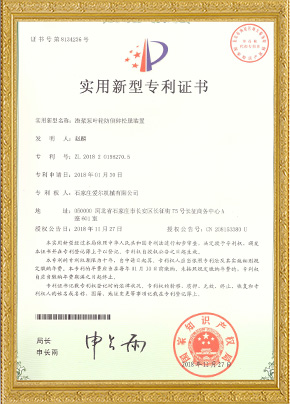Jul . 29, 2024 05:15 Back to list
Exploring the Latest Advances in Sewage Pump Technology for China's Urban Infrastructure Development
Understanding China’s Sewage Pump Market Trends and Innovations
The sewage pump industry in China has seen remarkable growth in recent years, driven by rapid urbanization, increasing population, and heightened environmental awareness. With a rising demand for effective wastewater management solutions, sewage pumps have become indispensable in municipal and industrial applications. This article delves into the current trends, innovations, and challenges faced by the sewage pump market in China.
Urbanization and Demand for Sewage Pumps
As one of the most populous countries in the world, China has been experiencing unprecedented urbanization. Cities are rapidly expanding, resulting in a significant increase in wastewater generation. According to the National Bureau of Statistics of China, more than 60% of the population now lives in urban areas, a figure projected to reach 70% by 2030. This urban migration puts immense pressure on the existing sewage treatment infrastructure, necessitating the adoption of efficient sewage pumping solutions.
Sewage pumps are essential in ensuring that wastewater is transported from collection points to treatment facilities. They help prevent flooding and reduce the risks associated with untreated wastewater, such as environmental degradation and public health hazards. Consequently, the demand for sewage pumps is anticipated to grow as municipalities invest in upgrading and expanding their sewage infrastructure.
Technological Innovations
The sewage pump market in China has also witnessed technological advancements aimed at improving efficiency, reliability, and environmental performance. One of the major trends is the integration of smart technologies into sewage pumps. For instance, many manufacturers are increasingly using IoT (Internet of Things) devices to monitor pump performance in real-time. This allows for predictive maintenance, which minimizes downtime and reduces operational costs.
china sewage pump

Moreover, advances in materials science have led to the development of more durable and corrosion-resistant pumps. Enhanced materials not only increase the lifespan of the pumps but also improve their performance in handling challenging sewage conditions, such as high solids content and varying temperature ranges.
Another noteworthy trend is the focus on energy-efficient pumps. With rising energy costs and environmental concerns, manufacturers are prioritizing designs that consume less energy while maintaining high pumping efficiency. Energy-efficient sewage pumps not only lower operational expenses but also contribute to overall sustainability efforts within urban infrastructure projects.
Challenges in the Sewage Pump Market
Despite the positive growth trajectory, the sewage pump market in China faces several challenges. One of the primary issues is the lack of adequate sewage treatment facilities in many rural areas. While urban centers are seeing advancements, rural regions often remain underdeveloped and struggle with outdated infrastructure. This disparity underscores the need for government intervention and investment in sewage management systems, particularly in less developed areas.
Additionally, the market is also confronted with intense competition. Numerous domestic and international players are vying for market share, driving down prices and increasing pressure on profit margins. Companies must continuously innovate and enhance their product offerings to maintain competitiveness.
Conclusion
In conclusion, the sewage pump market in China is poised for significant growth driven by urbanization, technological innovations, and rising environmental awareness. As cities continue to expand, the demand for efficient sewage management solutions will only intensify. By embracing advancements in technology and addressing current challenges, China can enhance its sewage infrastructure, ensuring a cleaner and more sustainable future. The ongoing transformation within this sector reflects the country's commitment to improving water quality and safeguarding public health while supporting its rapid urban development.
-
High Quality Slurry Pump Seals Reliable China Suppliers & Manufacturers
NewsJun.24,2025
-
High Quality Portable Submersible Slurry Pump Supplier & Manufacturer from China
NewsJun.10,2025
-
Slurry Pump Parts Manufacturer – High Quality Rubber Spare Parts from China
NewsJun.10,2025
-
High Quality 1/3 HP Submersible Sump Pump with Vertical - Reliable Supplier & Factory Price
NewsJun.10,2025
-
High-Efficiency Centrifugal Slurry Pumps India
NewsJun.10,2025
-
High Quality Warman Centrifugal Slurry Pump Suppliers & Factory
NewsJun.10,2025
